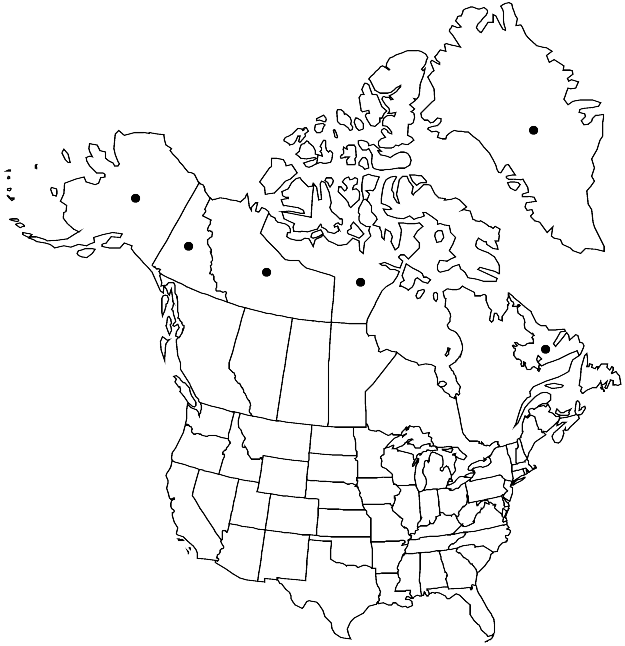Pseudocalliergon brevifolium
Lindbergia 16: 89. 1992.
Plants medium-sized, sometimes turgid, often with golden gloss when dry. Stems slightly and irregularly branched. Stem-leaves erectopatent to patent, falcate or strongly falcate, ovate to very broadly ovate, gradually or somewhat suddenly narrowed to apex; margins entire or occasionally partly very finely denticulate; apex short to long-acuminate, furrowed or almost tubular; costa single, to 3/5–3/4 leaf length, 21–53 µm wide at base, 2-stratose or 3-stratose, or double to 1/4–2/5 (–1/2) leaf length; alar cells rectangular or long-rectangular, inflated, walls slightly or strongly incrassate, region transversely triangular; distal laminal cells smooth. Perichaetia with inner leaves gradually or ± suddenly narrowed to apex, apex acuminate or short-acuminate. Capsule ± horizontal.
Habitat: Tundra, calcium-rich wetland habitats, rich fens, moist excavated soil, surrounding pools and percolation areas
Elevation: low to moderate elevations
Distribution

Greenland, Nfld. and Labr. (Labr.), N.W.T., Nunavut, Yukon, Alaska, n Eurasia
Discussion
Pseudocalliergon brevifolium is usually recognized by the yellow-brown, slightly and irregularly branched shoots, relatively broad, falcate leaves, and furrowed or almost tubular leaf acumen. The species could possibly be confused with P. angustifolium, but the latter has more narrowly acuminate stem and branch leaves. In P. angustifolium, the costa is normally single and 3–5-stratose, whereas it is only 2- or 3-stratose or frequently short and double in P. brevifolium. In P. angustifolium, the stem and branch leaf margins are at least partly distinctly denticulate or finely denticulate and the distal laminal cells are frequently prorate abaxially; in P. brevifolium the leaf margins are entire or occasionally very finely denticulate and the distal laminal cells are smooth. Pseudocalliergon brevifolium is often distinctly turgid, unlike P. angustifolium.
Selected References
None.
Lower Taxa
"um" is not declared as a valid unit of measurement for this property."narrower" is not a number.